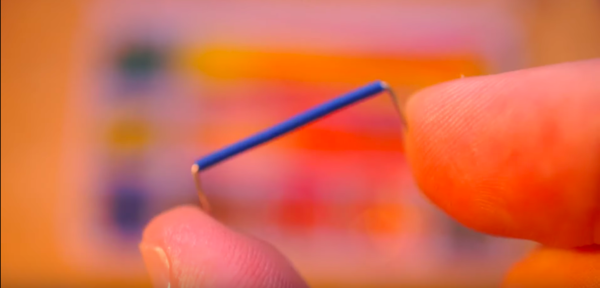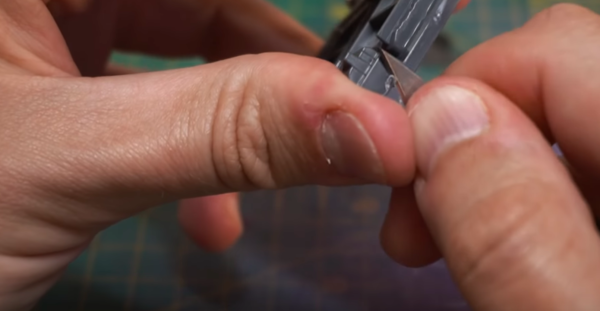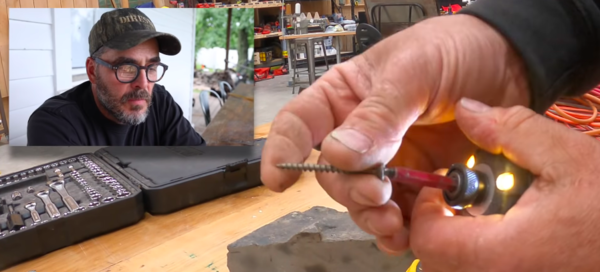Using Jumper Wires
Gareth's Tips, Tools, and Shop Tales - Issue #93
I am now 7 newsletters away from my 100th issue! It has been such a pleasure doing this weekly newsletter and I’m looking forward to the next 100 issues after that. One ambitious goal I would like to set for issue 100 is 4,000 subscribers. You can help by sharing this newsletter across your social media and sending it directly to friends you think might enjoy it. If you have/know of a popular maker podcast/channel, suggest having me on to talk tips and making. And if you have any clever ideas for promoting the newsletter and increasing its exposure, please let me know.
Using Jumper Wires

I had to chuckle at this Donald Bell video where he dates himself (these youngsters today!) by arguing the wisdom of using a stiff jumper wire kit instead of flexible cable-style jumper wires. Why, when I was coming up as an electronic hobbyist in the late 80s/early 90s, we didn’t have no stinkin’ cable connector kits! But he’s right. For complex breadboard circuits, preformed 24 AWG jumper wires make things much easier when it comes time to transfer your design to a permanent circuit medium such as perfboard. You can also easily cut your own jumper wires to any desired lengths. In this old Make: article and accompanying video, Charles Platt shows how to cut perfect jumpers every time.
Kitchen “Hack”
Here’s one from the Duh Department. If you’ve ever tried to remove a hot bowl from a carousel microwave and found yourself struggling to get pot holders or oven mitts around the bowl, just pick up and remove the carousel plate itself with the bowl on it. I can’t believe I’ve lived this long without figuring this out. Don’t judge.
Why You Want to Cut TOWARD Yourself

In this brief Midwinter Minis video, Guy explains why, when using a sharp hobby knife (or other small knife) for cutting/carving into small parts (like plastic model pieces), it’s actually safer to use your fingers and thumbs like a small vise around the object and to cut toward yourself. You have far more control this way and even though you’re using a razor or super-sharp scalpel toward your precious digits, with the proper grip and short cutting action, you’re not applying the kind of motive force that’s going to cut you. The worse thing you might get are little pressure-nicks in your thumb.
Mess Kit Coolant Plunge

My pal Sean Ragan made this handy coolant basin for his pedestal grinder by hose-clamping a camping canteen mess kit cup to the base. See more pics here.
Do You Prefer Robertson Heads Over Phillips?

Jimmy DiResta is finally back with another of his popular tool tips videos. In this one, sponsored by Acme Tools, he runs through tips for sanding, grinding, using a chop saw, impact driver, and other tools using the DeWalt products that Acme provided. In the segment on impact drivers, Jimmy again professes his love for Robertson (Square head) screws (and his dislike of Phillips) and why he thinks Robertsons are the best screws on the market. I’ve never used Robertsons with any regularity, but I’ve recently heard several other respected YouTube makers (e.g. Scott of Essential Craftsman) extolling their virtues. I think it’s time to give them a serious try. Thoughts from others?
Shop Talk
Reader Carolyne Darimont responds to the idea of color-coding moving boxes:
I’ve been using the packing box tip for almost 20 years. Thought I invented it 🙂
One change: I purchase a package of coloured construction paper and using a knife or ruler slice it sideways into various coloured strips. I tape those to the opposite box corners. Then the movers don’t even have to read.
With a full sheet of the same paper taped to each door they just have to colour match.
07/15/21(Gareth’s Tips, Tools, and Shop Tales is published by Cool Tools Lab. To receive the newsletter a week early, sign up here. — editors)









